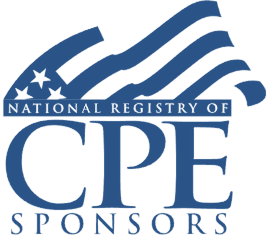Welcome! Save 30% on all CLE, CPE, and Professional Skills webinars, plus 15% off any annual pass with code HOLIDAY25
About the Course
Introduction
This course will explain what plans are required to file Forms 5500, 5500-SF, and 5500-EZ, how to prepare these required information returns and related schedules, and the most recent changes to these forms.
Description
Forms 5500, 5500-SF, and 5500-EZ satisfy the annual reporting requirements of the IRS, DOL, and PBGC. These series of forms provide these federal agencies with information about an employer's benefit plans. Form 5500 generally must be filed by large employer plans (those that cover 100 participants or more at the beginning of the year). Form 5500-SF may generally be filed by small employer plans (those that cover less than 100 participants at the beginning of the plan year. Form 5500-EZ is generally filed for one-participant plans, which means the plan covers the owner (and spouse), one or more partners in a partnership, and does not provide benefits for anyone except an owner, spouse, or one or more partners.
Accurate reporting on these forms is important because the IRS and DOL monitor the forms and certain details may trigger an IRS audit or DOL investigation. Completing these forms completely and accurately, and filing these forms timely is extremely important. The SECURE Act increased the penalty for late filing a Form 5500.
- The IRS penalty for late filing of a 5500-series return has increased 10-fold to $250 per day, up to a maximum of $150,000.
- The DOL penalty for late filing can run up to $1,100 per day, with no maximum.
Tax advisers working with employers maintaining employer benefit plans must understand the due dates, filing requirements, and how to complete these returns properly.
Listen as our panel of employee benefit plan experts walks you through the preparation of Forms 5500 and related schedules, including tips for completing the form efficiently and avoiding potential audit triggers.
Presented By

Mr. Ciminera is a member of the firm’s Employee Benefit Plan niche in the accounting and auditing services department where he specializes in auditing employee benefit plans of for-profit, nonprofit, and governmental entities. He also specializes in Form 5500 preparation. When necessary, Mr. Ciminera helps clients navigate and prepare filings for corrections of plan errors or late filings through the DOL Voluntary Fiduciary Correction Program, IRS Voluntary Correction Program, and DOL Delinquent Filer Voluntary Compliance Program.

Ms. Schanzenbach has over 25 years of experience working with plan sponsors in the design and administration of qualified retirement plans. She previously founded, owned and operated Benefit Consulting Associates, Inc., a full-service retirement plan administration firm. After merging her firm with Papalia Retirement Plan Services, Inc., Ms. Schanzenbach served as the Director of Retirement Plan Services.
-
BARBRI is a NASBA CPE sponsor and this 110-minute webinar is accredited for 2.0 CPE credits.
-
BARBRI is an IRS-approved continuing education provider offering certified courses for Enrolled Agents (EA) and Tax Return Preparers (RTRP).
Date + Time
- event
Thursday, May 25, 2023
- schedule
1:00 p.m. ET./10:00 a.m. PT
- Form 5500
- Filing requirements
- IRS and DOL scrutiny
- Completing the forms and related schedules
- 5500-EZ
- 5500-SF
- 5500
- Best practices
The panel will review these and other key issues:
- Who is required to file Form 5500, 5500-SF, and 5500-EZ?
- What disclosures on Form 5500 are highly scrutinized by the IRS or DOL?
- What are the late filing penalties, and what late filing relief is available for the Form 5500 series?
- What are the most recent changes to Form 5500, 5500-SF, and 5500-EZ?
Learning Objectives
After completing this course, you will be able to:
- Identify critical disclosures on Form 5500
- Decide when Forms 5500 are due
- Determine penalties that can be assessed for Forms 5500
- Ascertain the differences in filing requirements for Forms 5500
- Field of Study: Taxes
- Level of Knowledge: Intermediate
- Advance Preparation: None
- Teaching Method: Seminar/Lecture
- Delivery Method: Group-Internet (via computer)
- Attendance Monitoring Method: Attendance is monitored electronically via a participant's PIN and through a series of attendance verification prompts displayed throughout the program
- Prerequisite: Three years+ business or public firm experience preparing complex tax forms and schedules, supervising other preparers or accountants. Specific knowledge and understanding of individual income taxation, including itemized deductions, individual income tax credits, net operating loss limitations including carrybacks and carryforwards.

BARBRI, Inc. is registered with the National Association of State Boards of Accountancy (NASBA) as a sponsor of continuing professional education on the National Registry of CPE Sponsors. State boards of Accountancy have final authority on the acceptance of individual courses for CPE Credits. Complaints regarding registered sponsons may be submitted to NASBA through its website: www.nasbaregistry.org.

BARBRI is an IRS-approved continuing education provider offering certified courses for Enrolled Agents (EA) and Tax Return Preparers (RTRP).

BARBRI CE webinars-powered by Barbri-are backed by our 100% unconditional money-back guarantee: If you are not satisfied with any of our products, simply let us know and get a full refund. Contact us at 1-800-926-7926 .
Unlimited access to premium CLE courses:
- Annual access
- Available live and on-demand
- Best for attorneys and legal professionals
Unlimited access to premium CPE courses.:
- Annual access
- Available live and on-demand
- Best for CPAs and tax professionals
Unlimited access to premium CLE, CPE, Professional Skills and Practice-Ready courses.:
- Annual access
- Available live and on-demand
- Best for legal, accounting, and tax professionals
Unlimited access to Professional Skills and Practice-Ready courses:
- Annual access
- Available on-demand
- Best for new attorneys
Related Courses
Recommended Resources

How CPE Can Bridge the Gap Between What You Know and What You Need to Know
- Career Advancement



